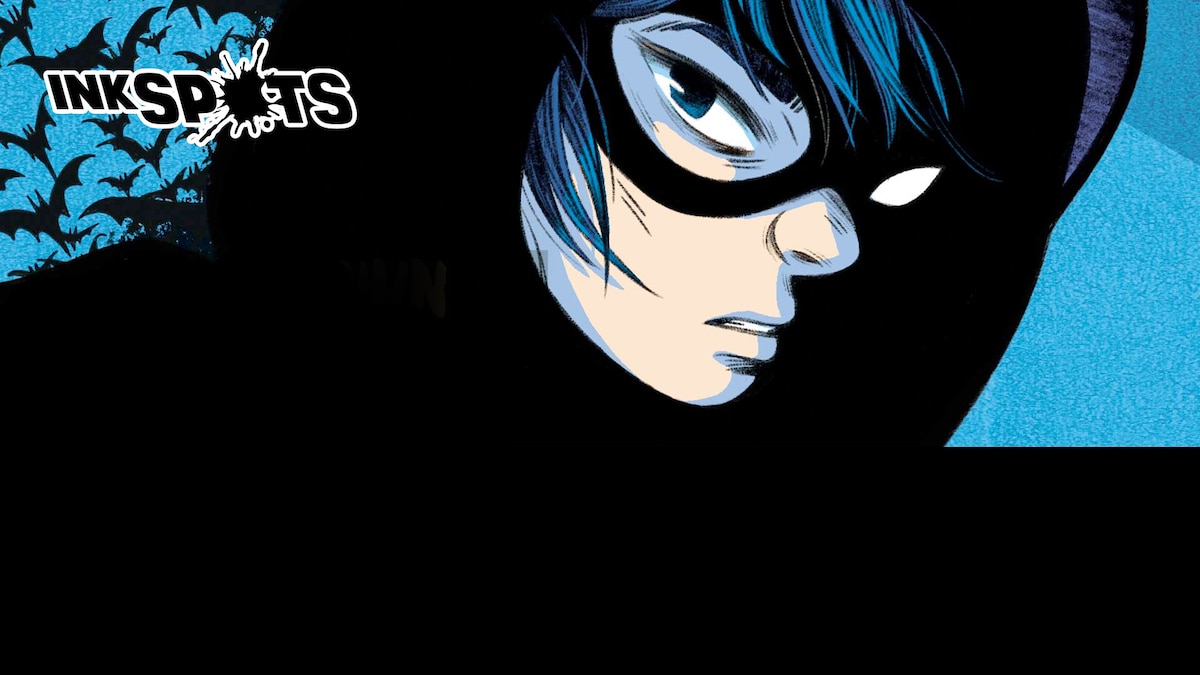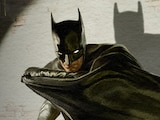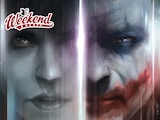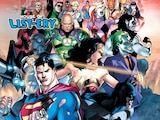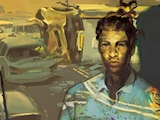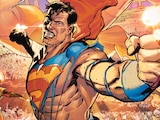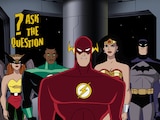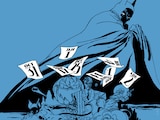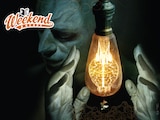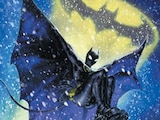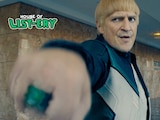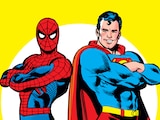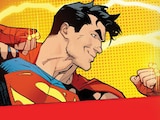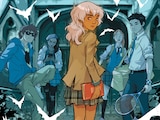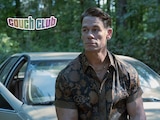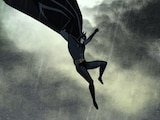Cassandra Cain is coming back in a big way. After years of serving as a supporting character in the likes of Detective Comics and Batman and the Outsiders, she’s finally taking the lead in DC’s new YA graphic novel, Shadow of the Batgirl. Like most of DC’s YA offerings, Shadow of the Batgirl offers a new, not-tied-to-other-books take on the pioneering character, meaning it’s all right if you’re not familiar with her. But whether or not you’re a Cass fan when you start, we’re pretty sure you’ll be one when you finish reading this heartfelt new superhero story which finds the young assassin trying to overcome the violence of her past and forge a new heroic destiny.
Shadow of the Batgirl is written by Sarah Kuhn, who’s built a reputation on writing exciting, relatable YA and adult fiction with an Asian slant. She’s joined by artist Nicole Goux, who has drawn comics for all of the big indie guys, including Image, IDW, Oni and Lion Forge. It’s hard to think of a better team to craft a new origin for one of DC’s coolest lesser-known characters (though the “lesser known” part’s likely to change with Cassandra’s prominent role in this weekend’s Birds of Prey movie). But if you need another reason to check out the book, you’ll find it in Cassandra’s newest mentor, who isn’t a Dark Knight or Boy Wonder, but a brass, bold, badass middle age noodle shop owner named Jackie. She’s the opinionated, loudly patterned life coach we never knew we needed. (Seriously, can we get a Jackie spinoff greenlit asap, please?)
Recently, Sarah and Nicole stopped by the DC office, and we were fortunate enough to talk to them about the book, how it all came together, the challenges that come with writing and drawing a non-verbal superhero and how Jackie wound up so awesome. Check out the free-flowing convo below.
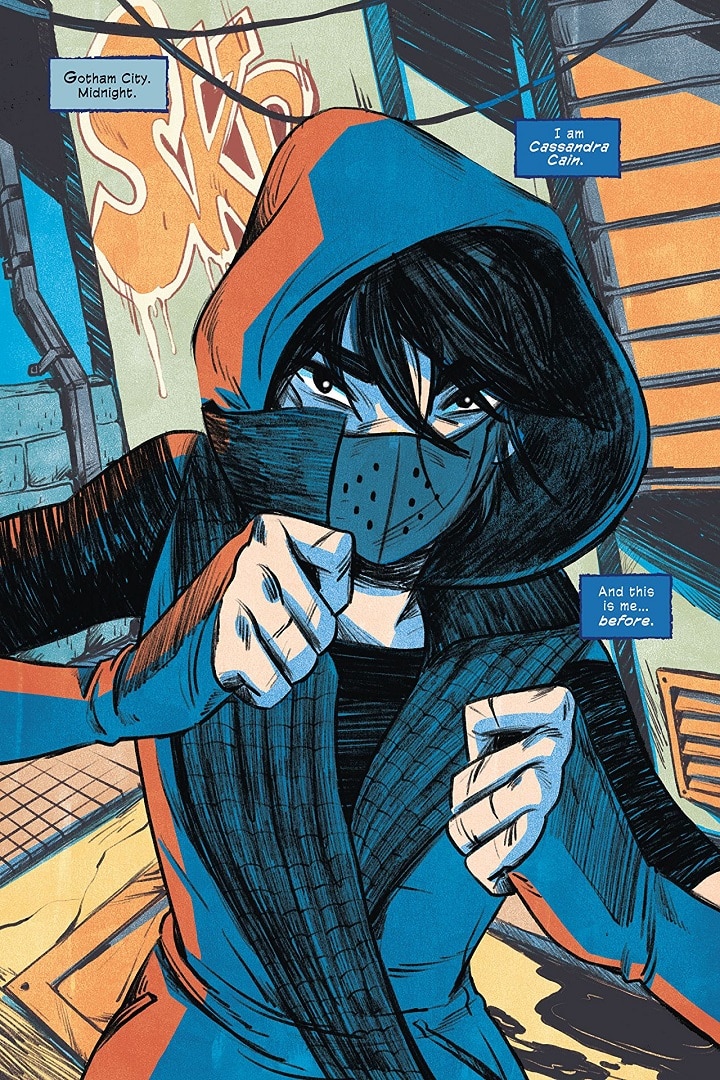
How did Shadow of the Batgirl come together?
Sarah Kuhn: When DC was starting its Young Adult line, they sent my agent this list of characters they were interested in getting pitches for. For the most part, they were characters who either everyone knows, like Wonder Woman or Supergirl, or they were characters who were in some of their upcoming movies and TV shows, like Mera. Batgirl was on the list and my agent knows that I love Cassandra Cain, so she asked if Batgirl meant just Barbara Gordon or if it could mean any Batgirl. They said something like, “It’s whatever sparks the most imagination.”
I actually put together pitches for two characters. I wrote one for Cassandra and one for Starfire. I actually thought that the Cassandra one was the longshot. I just thought if they were going to do a Batgirl book, they would want it to be Barbara Gordon, since she’s the Batgirl most people know. So, I was very excited and surprised when they came back and said they were interested in hearing more about Cass. I wrote some longer pitches and we refined it and honed it. It was just really exciting because as an Asian-American comic book geek, Cassandra Cain is a really meaningful character to me. Much of the time I was working on these pitches, I was thinking, “I can’t believe I’m even doing this. Even if it goes nowhere, I’m so excited to be writing a pitch for this character. I think she’s so important to so many people.”
All throughout the process, I kept expecting them to say, “Just kidding! This is not going to happen.” But it kept going and going until it got greenlit. That’s when we started the process of finding an artist.
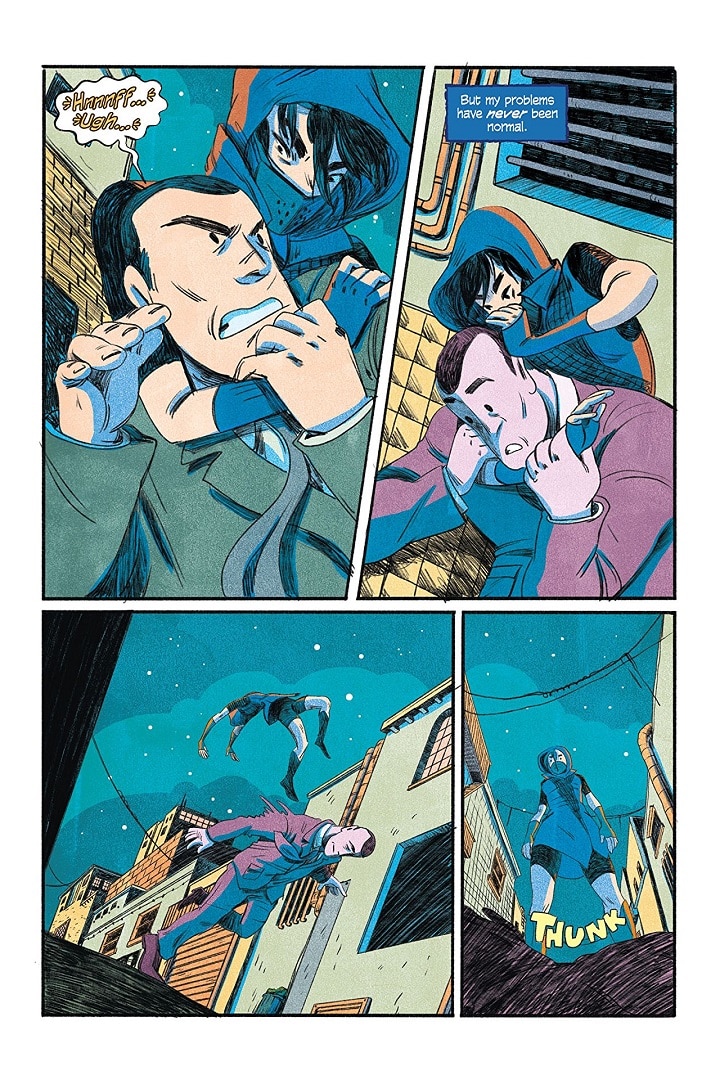
Nicole Goux: I met Sarah Miller, our editor, at WonderCon. It was interesting because a few years before—probably three or four years ago—I had applied for the DC Artists Workshop. I sent in some really low-res jpegs and never heard back, so I just wrote it off as this thing I did. So, I was at WonderCon and Sarah Miller came up to the table and was looking at my books and asked, “Did you apply for the DC Artists Workshop?”
I said that I had a couple of years ago and never heard anything back. She mentioned that she had helped organize it and remembered my artwork from the applications. Honestly, after having sent these almost unintelligible jpegs and never hearing back, I was very surprised that anybody would remember it. But she seemed really interested. Sarah said that at the time they were looking for more mainline stuff, but now they were starting this new YA line and she thought my stuff would fit much better there.
So, I gave her a book and a couple of days later I got an email asking me to do some character designs off of Sarah (Kuhn)’s pitch. It was a pretty brief description. I think I had a full description of Cassandra and some short ones for Babs and Jackie. I just did what I thought felt right for them. I know they tested a couple of people, but it was almost like, “Oh, you’re doing this now.” (laughs) It didn’t really feel like there was that much of a question once we got started doing it.
Sarah: That’s funny. I think we’ve talked about this before, but I also applied to the DC Talent Workshop as a writer years ago. The only thing I had done at that point was (the crowdfunded romance anthology) Fresh Romance. I think that was the sample I gave. It was the very first comic I’d ever written. I also got rejected. (laughs)
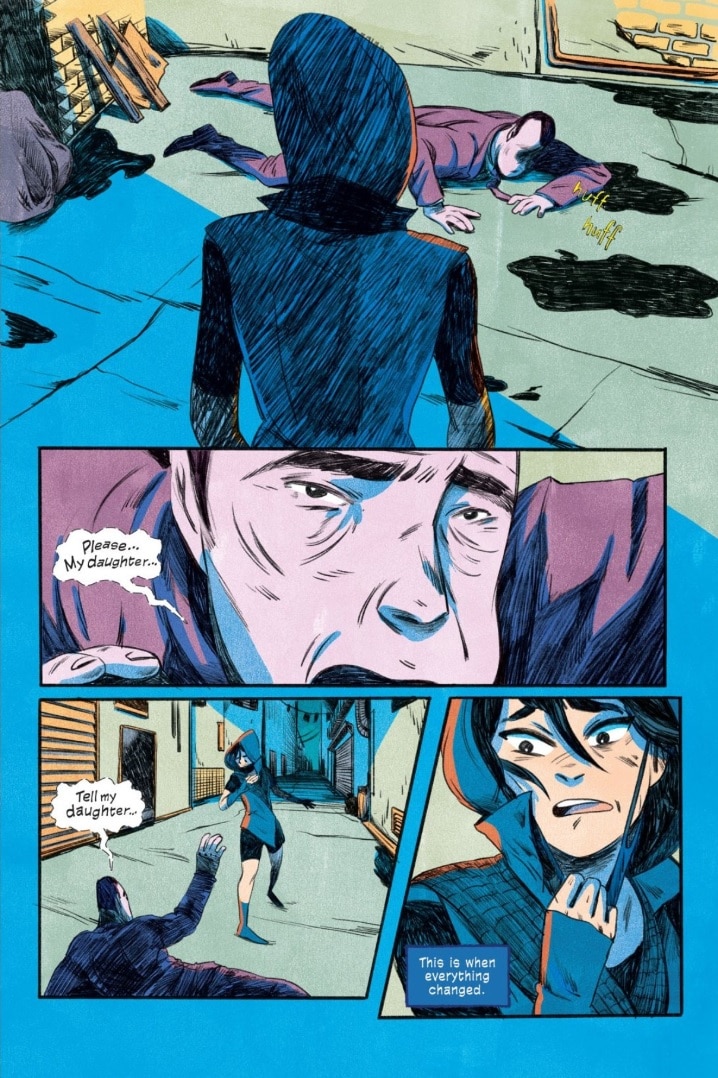
When you send in your sample, you have to include a personal statement, and the statement I included was actually about Cassandra Cain. So, it was a nice full circle, I think for both of us.
I remember when we first saw the character designs that Nicole had drawn. Everyone just fell in love with them, especially her Cassandra. In a character design, sometimes it’s hard to capture things like what the character will look like in motion or how she might look wearing different outfits. But in this case, it was all there in the design. There was just something about Nicole’s Cass that had so much empathy. I think we all just wanted to give her Cassandra a hug. Nicole just captured that feeling really well.
Traditionally, Cassandra Cain doesn’t speak much, and that’s true for her when Shadow of the Batgirl begins. Is it hard writing a nearly silent character? What are some of the challenges?
Sarah: Yes, it is! As a writer, one of the things I think I do well is dialog and banter. I love having a character pin a scene with a joke or one-liner. So, this was a really great challenge because I had to think of ways to convey Cassandra’s personality and emotions without dialog for a good portion of the book. It was a challenge, but ultimately, I really enjoyed it. I actually think it made me a better writer because I couldn’t go to the things I usually go to when I hit a wall. I had to sink a little bit deeper into the character. I had to get into her psychology, thought process and emotional responses. I’m very proud of what we did.
I think that, in the end, it really came together. Actually, a lot of my favorite pages in this book are the silent or almost silent pages, and much of that is due to what an amazing job that Nicole did with the character acting. When we did the final pass on the book, one of my greatest joys was getting rid of words. You could see it all in the art, in Cassandra’s expressions. You can see it in her acting. Nicole did a really beautiful job with that.
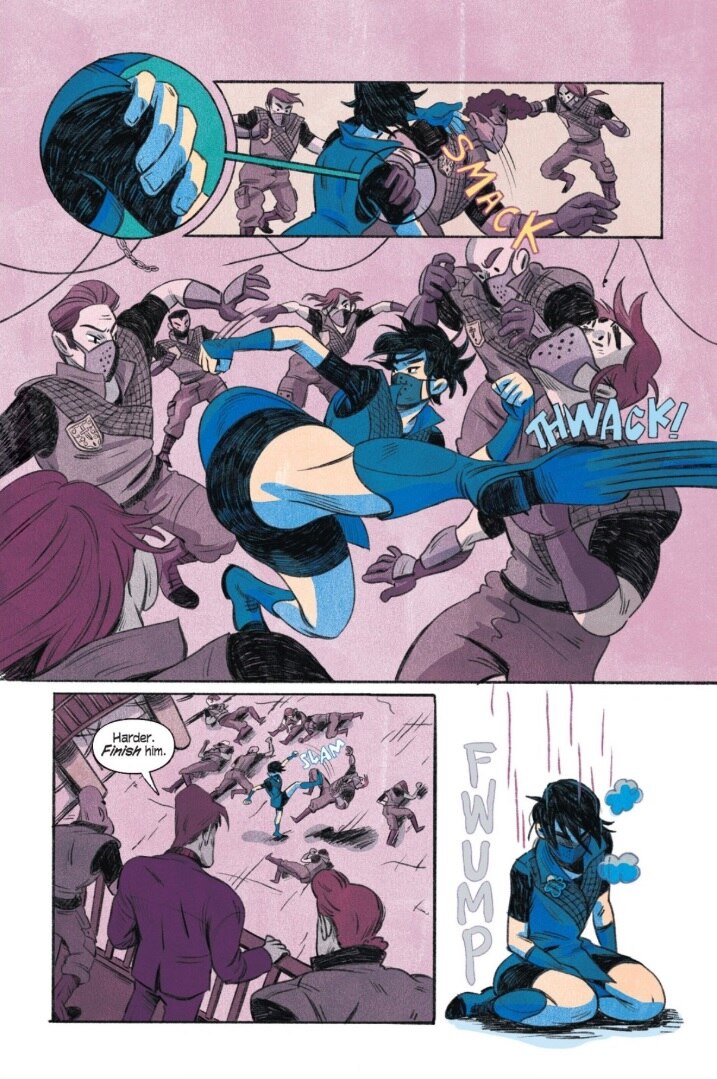
Nicole, it really seems like the art carries even more storytelling responsibility than is usually does when you’re drawing a Cass story. Did you feel any pressure?
Nicole: It’s an opportunity to really push the emoting and acting in a way that isn’t always necessary in comics because you usually have dialog that you can rely on. But for me, the process isn’t actually that different because I want to put those emotions in and show all of that anyway. That’s my job. My part of this process is to really show through the art what’s happening, what people are feeling and what’s going on. Maybe I needed to do that a little bit more here since there’s no dialog to fall back on, but I want to do that anyway. I want you to be able to see what my characters are feeling any time I’m drawing something. I want the action to show what’s going on. When I make comics outside of this, I tend to really love silent passages as well. I feel like you can do so much with a silent passage. Having dialog is helpful, but I don’t think you always need it. I think that shows with Cassandra just in general. She gets around with not talking.
One of my favorite moments in the book is the page where Cass is sneaking up on Barbara and tells her, “You’re sad.” After hearing that, you look a bit more closely at Babs and her body language in those previous panels and you realize that Cass is right. Babs does look sad, but you don’t even pick up on that until Cass says it.
Sarah: That’s one of my favorite pages in the whole book. Nicole did such a beautiful job of conveying the movement of that page. Cass starts way back sitting on a shelf, then she’s hiding as she’s sneaking up on Barbara and then suddenly she’s right behind Barbara. I think that moment also really gets into something that’s important about Cass, which is that she has these amazing assassin abilities that she’s learning to use in more mundane situations. She’s so good at acrobatics that she can get herself up on that shelf. She can move that quickly through this scene, but she’s doing it in this very mundane situation where she’s just trying to comfort her friend. I love how the art captured the movement of that sequence.
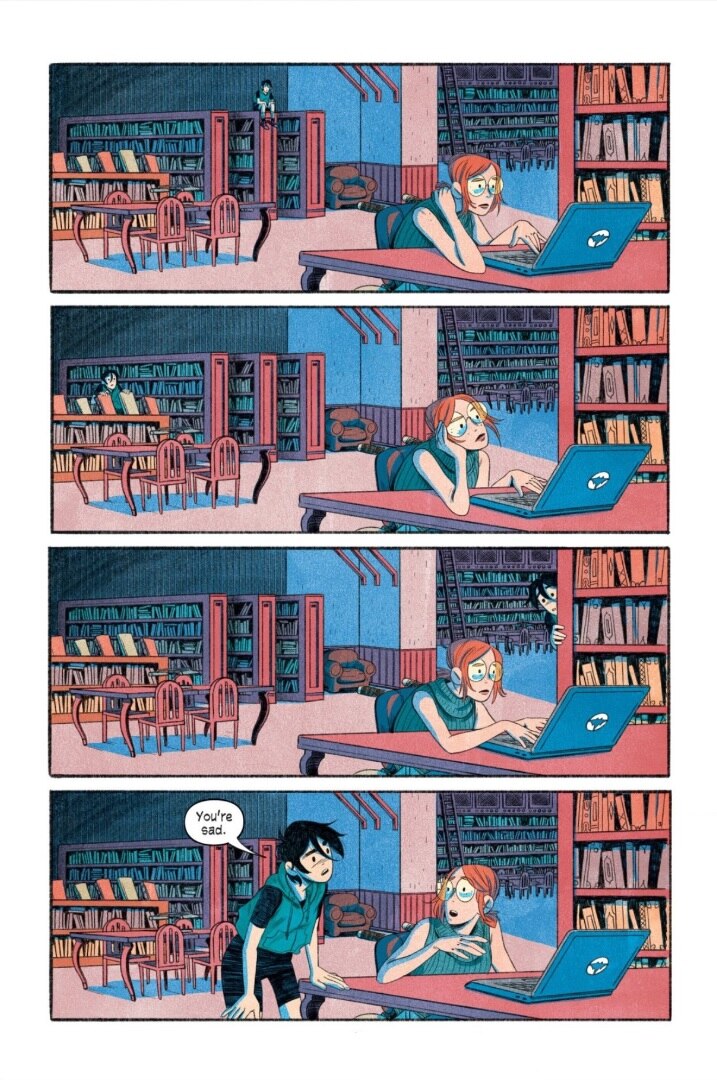
We’ve been talking a lot about Barbara. It’s interesting because I wouldn’t say Barbara Gordon and Cassandra Cain are particularly close in the regular DC Universe, but in Shadow of the Batgirl, Barbara becomes one of Cass’s mentors. Why go with Babs rather than Batman?
Sarah: The relationship between Cass and Barbara is something I’ve always loved because in the traditional DC Universe, Barbara does take on something of a big sister, mentor role to Cass. Though, obviously, Batman is a big presence in her life as well. One of the things I do in all of my work is I really love to write complicated friendships between women. I also love the idea of a female superhero mentoring a younger female superhero. From the very first pitch, that was always at the heart of this story—this mentorship and friendship that’s not traditional. It’s complicated and there are obviously things that they’re both dealing with, but they still come together and have this love for each other.
That’s something I love to write and something I love to read. That’s also why I added the Jackie character. She’s the Asian “auntie” who owns the noodle shop and becomes Cassandra’s other mentor. I know for me, as an Asian-American writer, it’s always been important to have other Asian-American writers to look up to. When I was a child, there weren’t that many. There weren’t examples of what I wanted to be—people who look like me doing what I wanted to do. So, it was important to me that Cassandra also have an older Asian-American female mentor. I think seeing someone like Jackie being a badass and living her life sort of helps you conceive of a world where you can be that too.
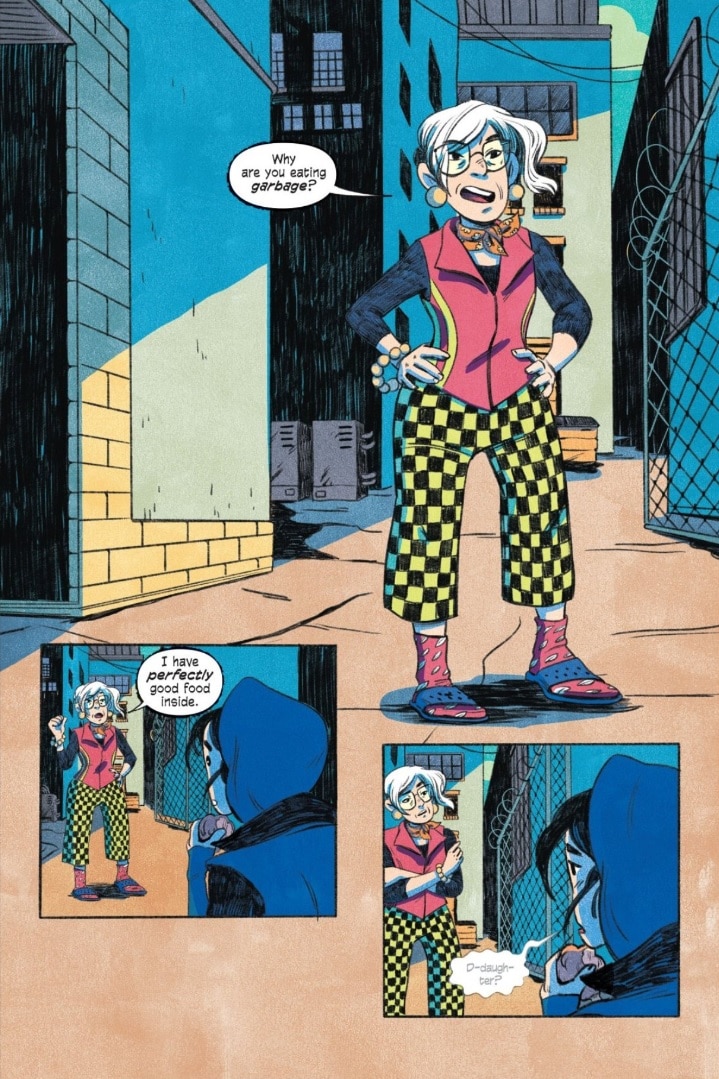
I loved Jackie! She’s such a fun new character. Where did she come from?
Sarah: I have many older Asian and Asian-American aunties in my life, some of whom I’m related to and some of whom I’m not. A lot of them have that personality where you’ve sort of grown into yourself and you don’t really care what anyone thinks of you anymore. You’re very blunt, sometimes to the point of uncomfortableness. But at the heart, underneath all that bluntness, is a very deep love. You want the person that you’re mentoring to thrive and to live their best life. I wanted Cass to have a mentor like that since Barbara is a little closer to her age and is a little more gentle.
One thing I love about Asian aunties, which is something that I have certainly grown more comfortable in as I’ve gotten older, is they love wearing the auntie fashion. Nicole and I talked a lot about that. We exchanged a lot of photos. It usually includes a lot of loud, clashing patterns. I feel like it’s a strong way of being seen, taking up space and expressing yourself.
Nicole: When you look at the photos and see people on the street with these outfits, they’re just so fun. It’s very much, “These are the things I like and so I’m going to wear them.” There are so many patterns and there’s so much you can do with that artistically. I think with Jackie having this crazy sense of fashion, it really shows Cass that she has the ability to choose what she wears and who she is. She doesn’t have to do what her father says or what anyone else says. She can pick these things for herself. That’s represented in the way that Jackie dresses herself and shares her clothing with Cass. They bond over that.
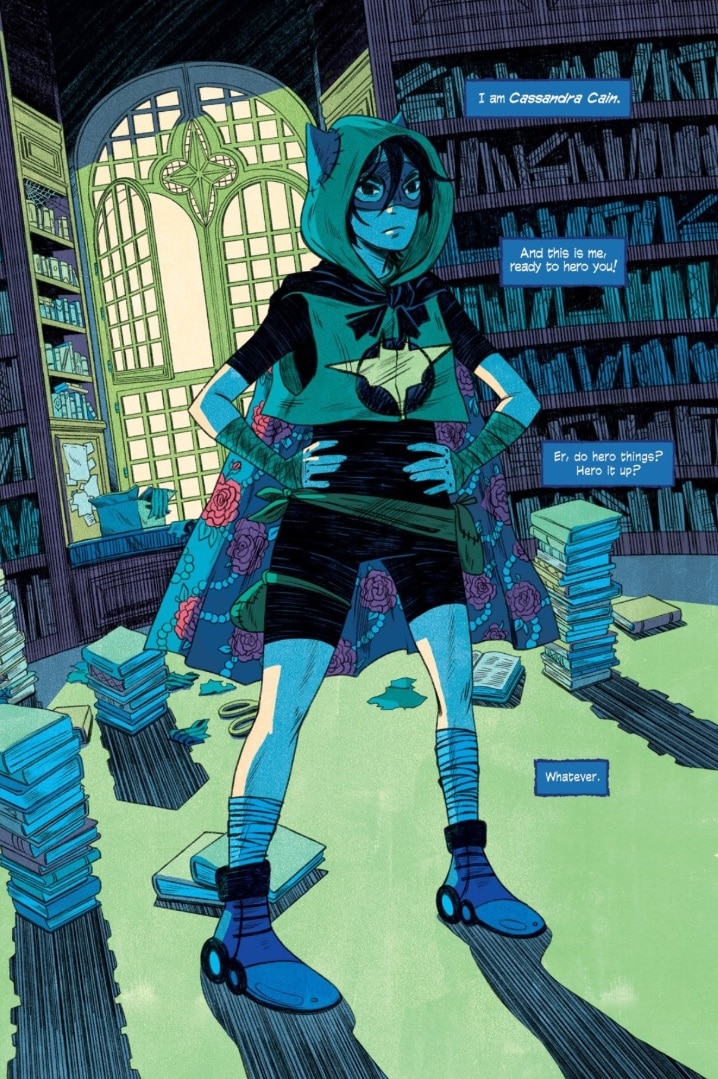
Sarah: You should talk about the cape.
Nicole: The cape, oh yes! Throughout the book, Cass is developing this idea of becoming Batgirl, and so she has a homemade costume that she creates about halfway through the book. Most of the pieces she uses to make her outfit are pieces that she’s gotten from the lost and found. But the cape itself is a floral pattern overshirt that she got directly from Jackie. She’s taking the pieces of this new world that she’s created for herself and making a uniform to represent this idea of Batgirl and what that means for her.
Sarah: I love it. Nicole came up with that. Cass is using this loud, floral garment that she got from Jackie as her cape. You see it throughout the book, and it’s such a great visual. It made me really happy because it was another thing that, to me, just felt so Asian. Using this sort of loud fashion, and being like, “That’s my superhero cape!” I love that! I was just so happy every time I saw that in the art.
Shadow of the Batgirl by Sarah Kuhn and Nicole Goux is now available in bookstores, comic shops and as a digital graphic novel.
Tim Beedle may work and live on Earth, but he prefers to spend his free time in the worlds created by Philip Pullman, Garth Nix and Philip Reeve. His favorite superhero is Batman, which he knows is everyone else’s favorite too, so he’s really trying hard to get into a slightly less popular one. Keep tabs on how it's going by following him on Twitter at @Tim_Beedle.
